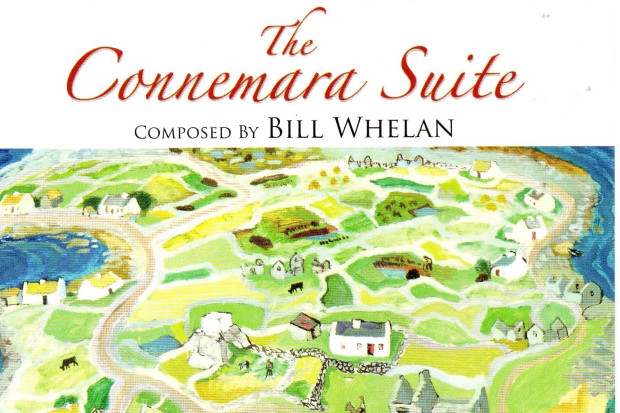
Henning Kraggerud (Photo: Kaupo Kikkas)
Reflections on Home from Norway to Ukraine
Norwegian violinist, conductor and composer Henning Kraggerud has been coming to Ireland since 1998, but this concert was his debut with the Irish Chamber Orchestra (10 March, NCH). Especially as a violinist he has an international reputation, and with the Arctic Philharmonic Chamber Orchestra, of whom he is artistic director, he has released CDs of idiosyncratic but consummate recordings of Vivaldi and Bach, as well as his own compositions. I was curious, therefore, to see what he would create in combination with the Irish Chamber Orchestra.
Kraggerud’s Arctic Chamber Orchestra is a strings-only ensemble, and so tonight, in a programme titled ‘Homelands’ and consisting almost entirely of pieces either written or arranged by Kraggerud for that ensemble, the ICO was strings-only too.
After a brief improvisatory opening (which I think – I may have misheard – was based on a Ukrainian folk melody), the concert opened with two Norwegian works. First was Ole Bull’s I ensomme stunde (or La Mélancolie) (1863), which was followed by Johan Svendsen’s Romance, Op. 26 (1881), both in Kraggerud’s arrangement for string orchestra. These works indicate Kraggerud’s ‘homelands’ in more ways than one: not only are they Norwegian, but they revealed Kraggerud’s particular strengths as a musician: his clear, light and warm violin tone, and his ability to follow wide emotional contours of a melody while, as director, bringing the orchestra with him. These pieces also demonstrate how at home Kraggerud is with the Romantic repertoire.
Next was some music from the homeland of the other musicians on stage: a world premiere by Irish-English composer Siobhan Lamb, straightforwardly titled Home. This strongly tonal work comprised an allegretto opening movement followed by a 7/8 scherzo. It had occasional strong technical moments, especially in the use of tutti crescendi, but it was a weakly structured and derivative work that the musicians, to their credit, managed to make sound vibrant.
Closing off the first half was the largest piece of the night, Grieg’s Holberg Suite, Op. 40. This was unsurprisingly the strongest piece of the night too, and it allowed the performers to show off their musicality in a way they hadn’t before: the strong sense of dance and movement in this work made sense of Kraggerud’s strikingly physical and mobile directing style, as well as of the ICO’s decision to perform standing. It also answered well to their musical sensitivity: in the sarabande in particular, they wonderfully brought out its alternating light and darkness, movement and rest.
The second half of the concert featured two more Romantic Norwegian compositions: the Adagio from Christian Sinding’s Suite ‘In alten stil’, Op. 10 (1889) and Johan Halvorsen’s ‘Veslemøys sang’ from his Suite Mosaïque (1898), both arranged for string orchestra and solo violin, and presumably again by Kraggerud. But the centrepiece of this half of the concert was three ‘postludes’ from a large-scale composition by Kraggerud himself: his Equinox (2015). These were charming little character pieces that are clearly indebted to Kraggerud’s Romantic touchstones, but which still have a charm of their own. In particular, the first, ‘Dhaka’, had a fantastic bounding energy that suited Kraggerud’s performance energy perfectly, as well as some delightful hocketing and a perfectly executed tempo change at the end.
An unprogrammed work finished the concert: an arrangement of Ukrainian composer Miroslav Skorik’s ‘Melody in A Minor’, written for Vladimir Denisenko’s 1982 feature film High Pass. Perhaps Kraggerud took Alex Ross’s and Adrian Smith’s advice that the way to respond to Vladimir Putin’s invasion of Ukraine is not to censure Russian artists who could be put in mortal danger for speaking out against the war, but to uplift Ukrainian artists. In the concert setting, Skorik’s repeated melody has a saccharine quality it would not have had in its original context, but it gained a strange other power, perhaps also due to the extended silence Kraggerud held open afterwards: I dwelt, in this silence, on how this most Romantic work is immeasurably far from the barbarism Ukrainians are now suffering, but somehow and nevertheless a response to it. Somehow and nevertheless our response in turn was a standing ovation.
For upcoming Irish Chamber Orchestra performances, visit www.irishchamberorchestra.com/whatson.
Published on 16 March 2022
James Camien McGuiggan studied music in Maynooth University and has a PhD in the philosophy of art from the University of Southampton. He is currently an independent scholar.

















